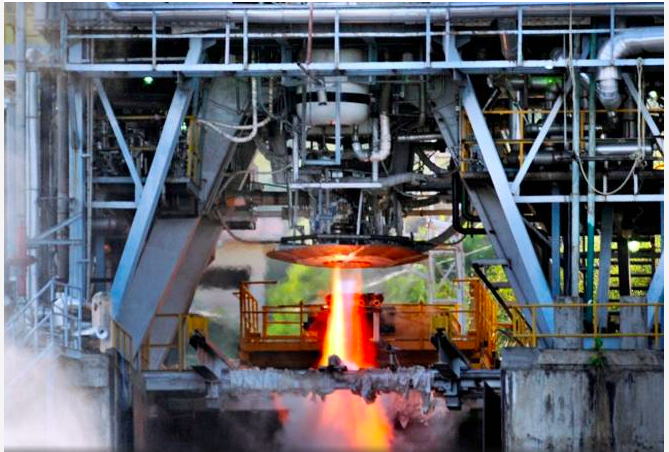
The cryogenic engine undergoing the hot bed test at theISRO Propulsion Research Centre in Mahendragiri on Friday.
Indian Space Research Organisation’s (ISRO) bid to acquire the capability to launch heavier satellites into orbit received a boost on Friday with the successful hotbed test of the cryogenic engine for the upper stage of the GSLV Mark 3 rocket.
The long-duration test at the ISRO Propulsion Research Centre at Mahendragiri lasted 640 seconds.
Using Liquid Hydrogen at -253 degrees C and Liquid Oxygen at -193 degrees C as propellants, the high-thrust cryogenic engine (CE20) generates power of approximately 2 MW. Developed at the Liquid Propulsion System centre (LPSC) here, the engine had already undergone two short-duration tests for engine ignition and steady state performance.
Last year, the first developmental engine completed different hot tests in various operating regimes. The third engine identified for flight use will be vacuum tested in the high altitude test facility as part of the flight acceptance test.
ISRO chairman A.S. Kiran Kumar termed the test as a phenomenal achievement in the shortest time.
Earlier in the day, Mr. Kumar said preparations were under way for the first developmental flight of the GSLV Mark 3 in December 2016. He was talking to the media on the sidelines of a workshop organised by the VSSC and the Society for Aerospace Quality and Reliability (SAQR).

